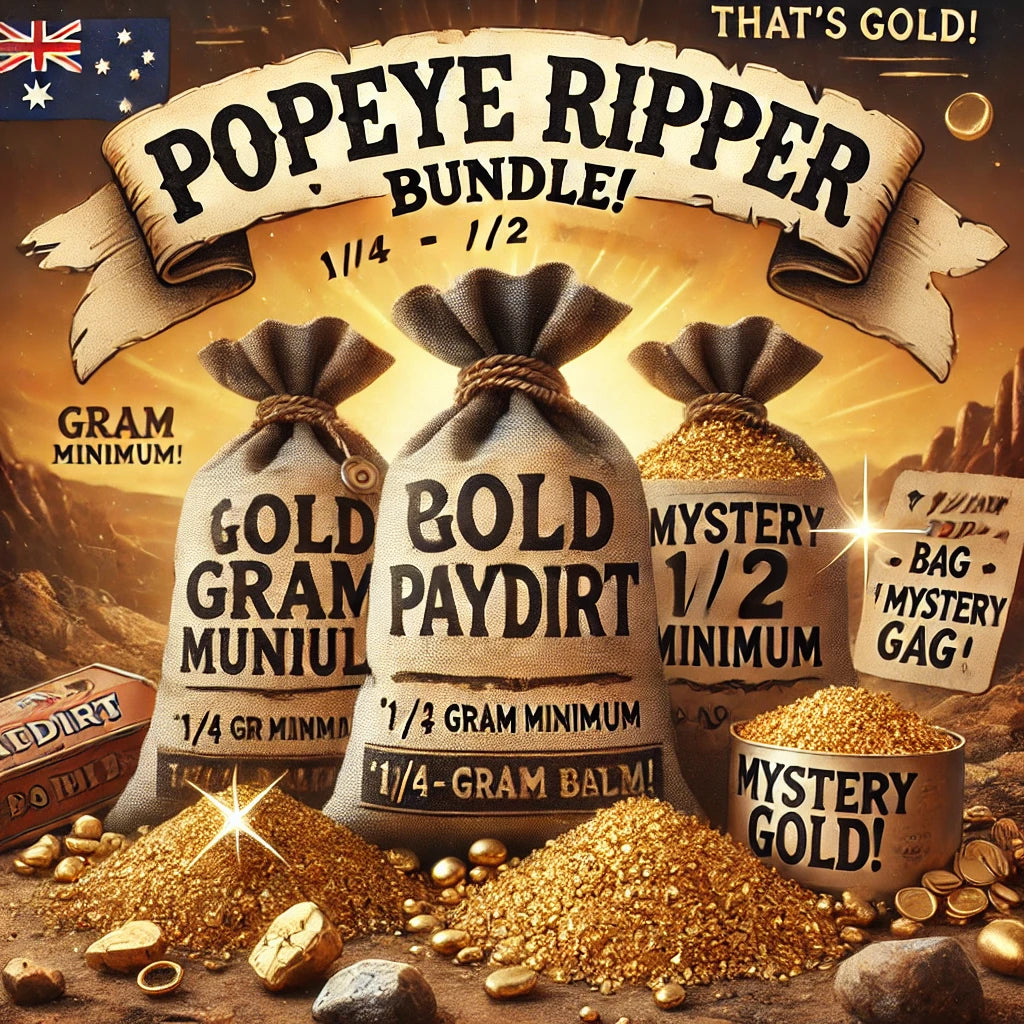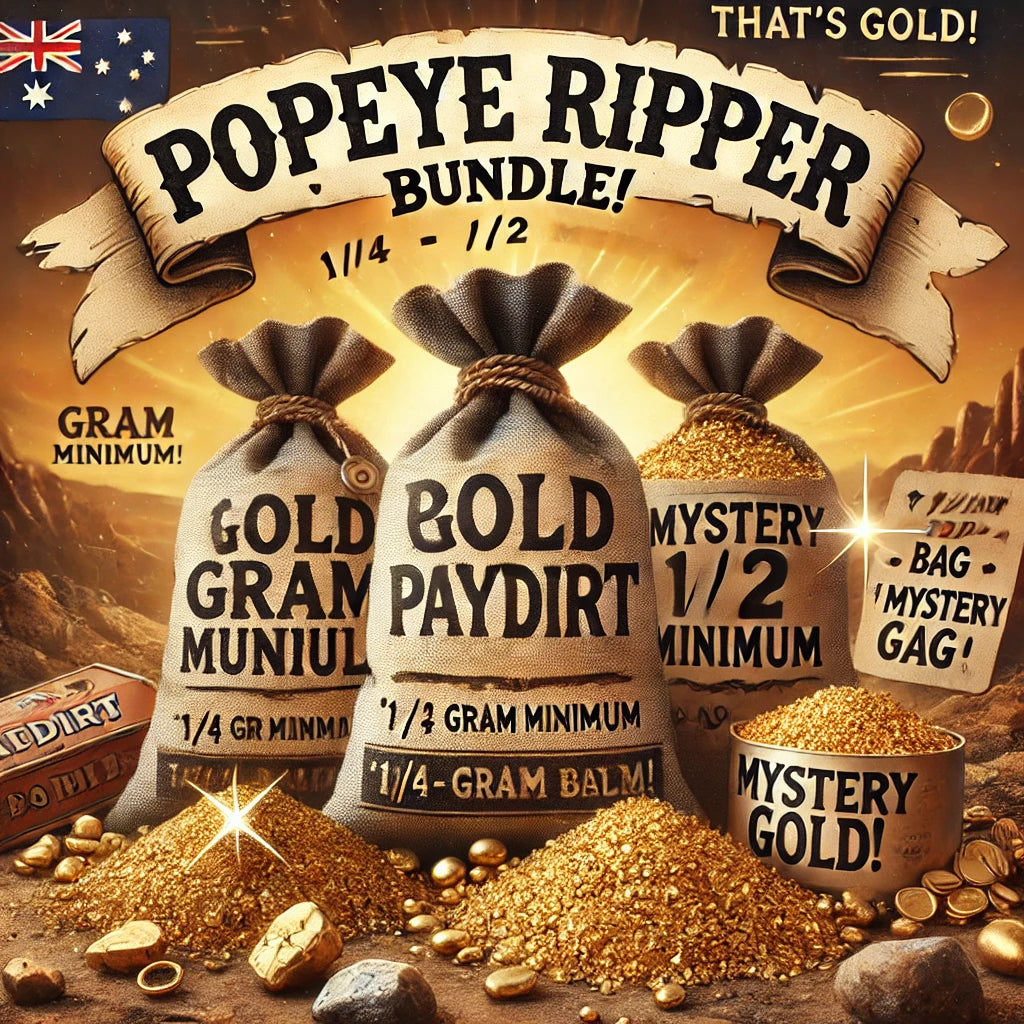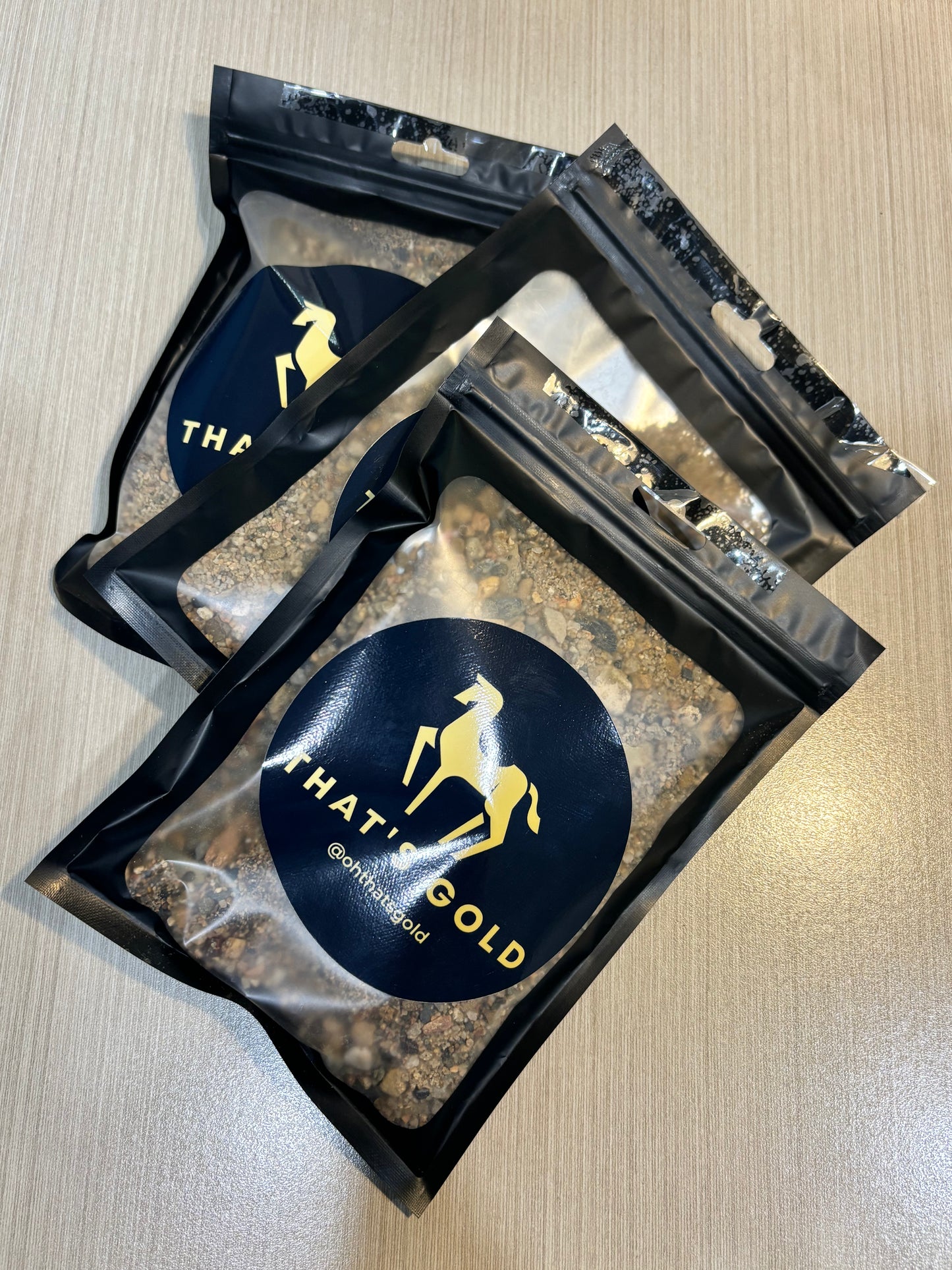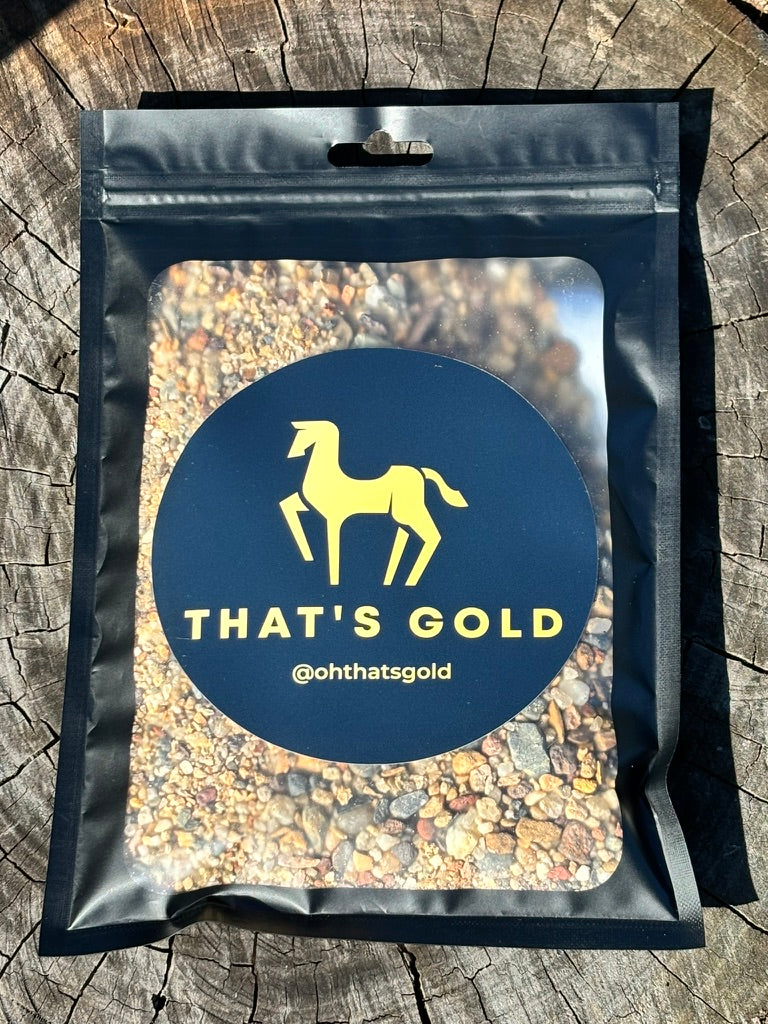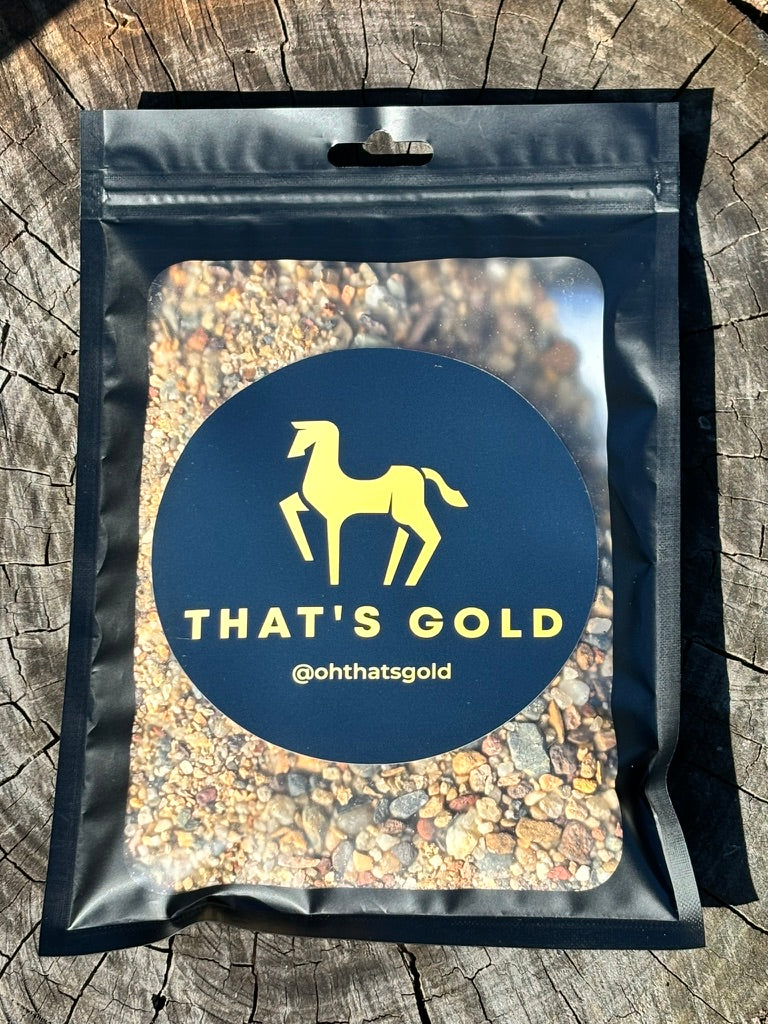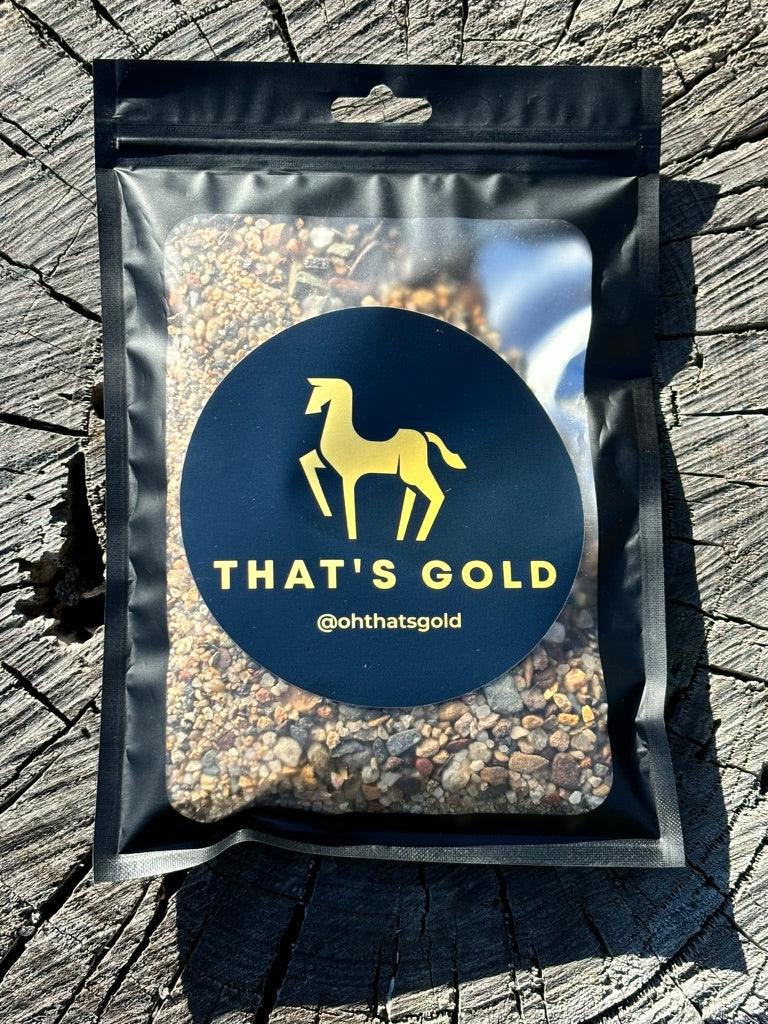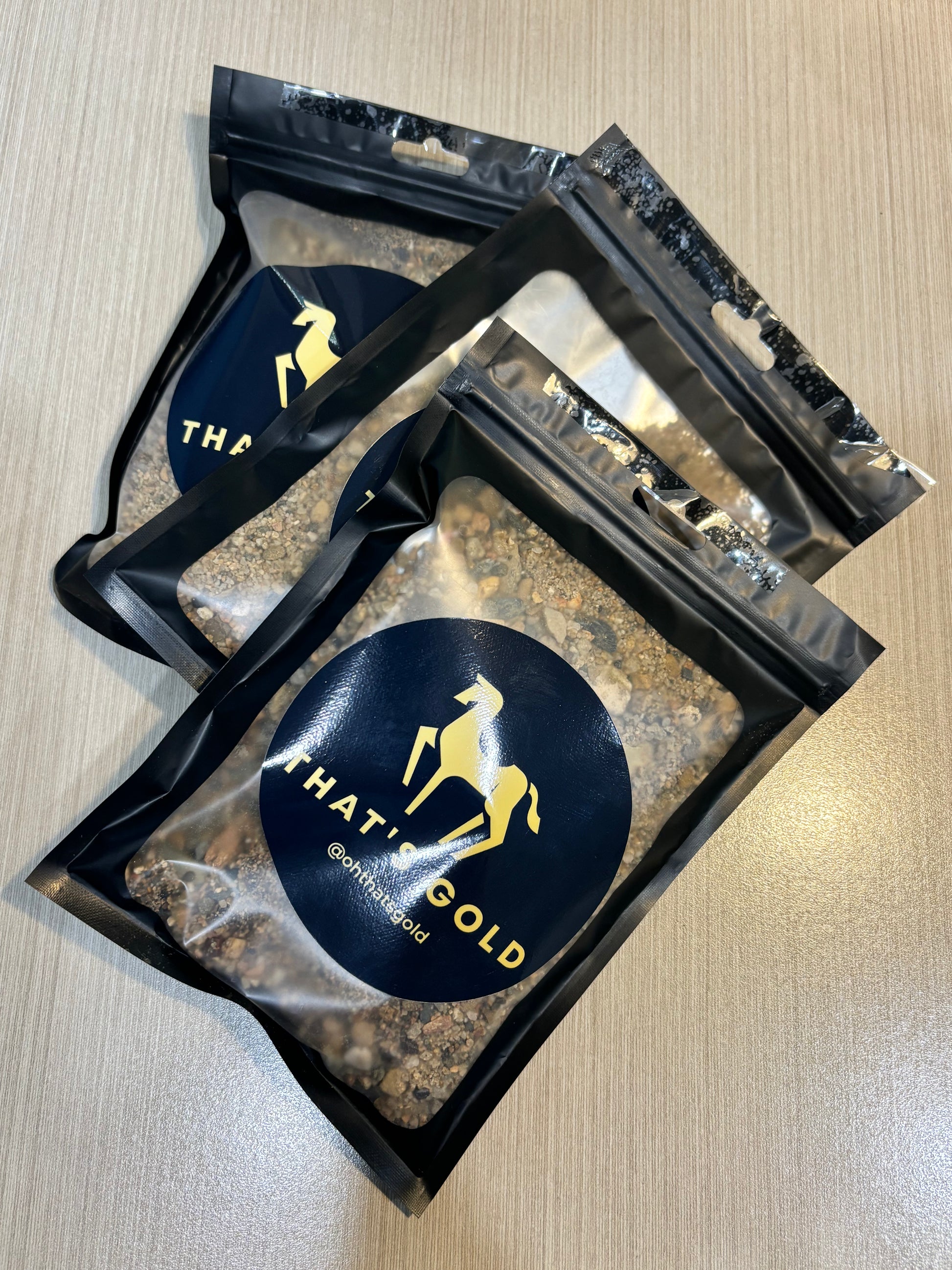People do buy paydirt. It's a popular hobby for gold enthusiasts and amateur prospectors. Paydirt is dirt and gravel that might contain gold. Buyers sift through it, hoping to find precious metal.
The appeal of paydirt lies in the thrill of discovery and the chance to strike it rich. Some folks buy it for fun, while others see it as a potential investment. Sellers offer paydirt from different locations, each with its own gold-bearing potential.
Buying paydirt is easier than travelling to gold-rich areas. It lets people enjoy gold panning at home. But buyers should be careful. Not all paydirt contains gold, and some sellers may make false claims.
Key Takeaways
- Paydirt is dirt that might hold gold, bought by hobbyists and prospectors
- Buyers sift through paydirt at home, hoping to find valuable gold
- Care is needed when buying paydirt to avoid false claims and ensure quality
Understanding Paydirt
Paydirt is a type of soil or gravel that may contain gold or other valuable minerals. It's often sought after by prospectors and hobbyists looking to strike it rich.
Definition and Origins
Paydirt refers to dirt or gravel that contains gold or other precious metals. The term comes from the gold rush era when miners would "pay dirt" to their workers if gold was found. Paydirt can be found in riverbeds, creek beds, and other areas where water has deposited heavy minerals over time.
Gold in paydirt is usually in the form of tiny flakes or nuggets mixed with sand and gravel. Modern prospectors buy paydirt to pan for gold at home or as a fun hobby. Some companies sell bags of paydirt with guaranteed gold content.
Composition and Characteristics
Paydirt is made up of a mix of sand, gravel, and other materials. It often contains heavy mineral concentrations, including gold, silver, and gemstones. The exact makeup varies based on where it's from.
Good paydirt has: • A mix of different-sized particles • Dark, iron-rich sand • Visible flakes of gold (sometimes)
Paydirt from placer deposits is most common. These are areas where flowing water has concentrated heavy minerals. River bends and areas behind large rocks are prime spots for finding rich paydirt.
The amount of gold in paydirt can vary widely. Some bags sold online might have only a few flakes, while others could contain several grams.
The Allure of Gold Prospecting
Gold prospecting captivates people with dreams of striking it rich. The thrill of the hunt and potential for wealth draws many to try their luck panning for gold.
Modern-Day Gold Rush
Gold fever still grips many Australians today. Prospectors head to known goldfields in Western Australia, Victoria, and New South Wales. They use metal detectors, sluice boxes, and pans to search for gold nuggets and flakes. Some lucky hunters find sizeable nuggets worth thousands of dollars.
TV shows about gold prospecting have fuelled interest in recent years. They showcase the excitement of finding gold and the tough work involved. This has inspired more people to give prospecting a go.
Improved technology has made it easier for amateurs to join the hunt. Affordable metal detectors can find small nuggets buried underground. Online forums let prospectors share tips and hotspots.
Prospecting as a Hobby
For many, gold prospecting is a fun weekend activity. It gets people outdoors and active in nature. Clubs organise trips where newbies can learn the ropes.
Prospecting appeals to history buffs interested in Australia's gold rush era. They enjoy using old-fashioned tools like gold pans. It's a way to connect with the past.
The social side attracts some hobbyists. They enjoy swapping stories around the campfire after a day's prospecting. For others, it's a peaceful solo pursuit - a chance to unwind in the bush.
Even if they don't strike it rich, many find the search rewarding. Small amounts of gold dust or tiny nuggets are exciting discoveries. It's the thrill of the hunt that keeps them coming back for more.
The Market for Paydirt
Paydirt sales have grown into a niche industry serving hobbyist gold prospectors. Sellers source dirt from gold-rich areas and market it to buyers hoping to strike it lucky. Online platforms have expanded the reach of paydirt merchants beyond local markets.
Paydirt Sellers and Buyers
Paydirt sellers range from small-scale operators to larger commercial ventures. They gather dirt and gravel from known gold-bearing regions like Alaska, California, and Australia. Some sellers pan or process the dirt themselves before packaging it for sale.
Buyers are typically amateur gold prospectors and hobbyists. They purchase paydirt to experience the thrill of gold panning without travelling to remote locations. Some buyers hope to recover enough gold to offset their costs, while others view it as pure entertainment.
The quality and gold content of paydirt can vary widely between sellers. Reputable merchants often guarantee a minimum amount of gold per package. Prices range from $20 to over $100 depending on the quantity and claimed gold content.
Online Sales and Marketing
The internet has transformed the paydirt industry. Online marketplaces like eBay and Amazon host numerous paydirt listings. Dedicated websites also specialise in paydirt sales.
Sellers use photos, videos and customer reviews to market their products. Many post "unboxing" videos showing buyers panning their paydirt. This helps build trust and excitement.
Social media plays a big role in paydirt marketing. Facebook groups and YouTube channels cater to the paydirt community. Sellers engage directly with customers and share panning tips.
Some online sellers offer subscription boxes with monthly paydirt deliveries. This creates a steady income stream and keeps buyers coming back for more.
Gold Panning Techniques
Gold panning uses simple tools to separate gold from dirt and gravel. It takes skill and practice to get good results. There are basic methods for beginners and more advanced ones for experts.
Basic Panning Skills
To start gold panning, fill a pan with dirt from a creek or river. Dip the pan in water and swirl it around. This washes away lighter materials. Tilt the pan and shake it gently from side to side. The gold, being heavy, sinks to the bottom.
Keep washing away the lighter stuff until only dark sand remains. Look for shiny yellow flakes of gold. It takes time to get the moves right. Be patient and keep practising.
Use a proper gold pan. Metal or plastic both work well. Choose one with deep grooves to trap gold. A 14-inch pan is a good size for beginners.
Advanced Recovery Methods
For bigger gold hauls, try a sluice box. This long trough has riffles to catch gold as water flows through. Set it up in a creek or use a pump to add water. Shovel dirt into the top and let the water do the work.
Sluice boxes process more material than pans. They're great for areas with lots of gold-bearing dirt. Clean out the riffles often to collect your gold.
Some miners use power sluices. These have motors to create water flow. They work well in spots with less water. Power sluices are portable and efficient.
Learn to read the creek. Look for places where gold might settle, like behind big rocks. The more you know about how gold moves in water, the better your results will be.
Authenticity and Verification
Buying real gold paydirt requires caution and research. Knowing how to spot genuine products and avoid scams is key for prospectors.
Identifying Real Gold Paydirt
Genuine gold paydirt often comes from known gold-bearing areas. Trusted sellers provide details about the paydirt's source and expected gold content. Look for paydirt with visible gold flakes or nuggets. Reputable sellers may offer guarantees or lab test results.
Check the seller's reputation through reviews and ratings. Be wary of deals that seem too good to be true. Real paydirt should have a mix of sand, dirt, and small rocks. Avoid paydirt that looks too clean or processed.
Some sellers offer sample bags to test before buying larger amounts. This helps verify the paydirt's quality. Ask about the mining methods used to collect the dirt. Responsible sellers can explain their processes.
Avoiding Scams and Bad Actors
Scammers may sell fake paydirt with no gold or very little gold. They might use brass shavings or fool's gold to trick buyers. Be careful of sellers who make big promises about gold amounts.
Check if the seller has a physical address and contact details. Avoid those who only communicate through anonymous channels. Be wary of pressure tactics or limited-time offers.
Research the seller's background and business history. Look for red flags like bad reviews or complaints. Don't trust sellers who refuse to answer questions about their paydirt.
Some scammers may 'salt' paydirt with gold from other sources. This gives a false impression of the dirt's value. Ask for proof of the paydirt's origin and authenticity.
Gold Recovery Devices
Gold recovery devices help separate gold from other materials in paydirt. These tools range from simple pans to complex machines. They use gravity and other methods to isolate gold particles.
Sluice Boxes and Pans
Sluice boxes are long troughs with riffles that trap gold as water flows through. Miners place paydirt at the top and add water. The flow carries lighter materials away while gold settles in the riffles. Sluice boxes come in various sizes, from portable models to large, stationary units.
Gold pans are shallow, round dishes used to swirl paydirt in water. As the miner swirls, gold sinks to the bottom while lighter materials wash away. Pans are cheap and portable, but slow for processing large amounts of material.
Both tools are popular with hobbyists and small-scale miners. They're simple to use but require skill to get the best results.
Mechanical Concentrators
Mechanical concentrators use machines to separate gold from paydirt. Spiral wheels have curved channels that spin, using centrifugal force to trap gold. Shaker tables vibrate, moving gold across a ridged surface while waste washes away.
Trommel screens rotate to sift material through different sized mesh. This sorts paydirt before it moves to other recovery devices. Jigs use water pulses to sort minerals by weight, with gold settling at the bottom.
These devices can process more material than manual methods. They're often used in larger mining operations. Some hobbyists also use smaller versions for better gold recovery from their paydirt.
Practical Aspects of Buying Paydirt
Buying paydirt can be an exciting way to try gold panning at home. It's important to learn proper techniques and choose quality material to get the most out of the experience.
Practice Panning for Beginners
New gold panners should start with small amounts of paydirt to hone their skills. Fill a pan with paydirt and water, then tilt and swirl it gently. This motion helps separate gold from lighter materials.
Patience is key. It takes time to master the right movements. Many beginners find it helpful to practice with fake gold first. This allows them to perfect their technique without wasting real paydirt.
As skills improve, try panning in different conditions. Experiment with various water depths and flow rates. This mimics real prospecting environments and builds confidence.
Selecting the Right Paydirt
Quality paydirt is crucial for a good panning experience. Look for sellers who guarantee a minimum gold content. Some offer paydirt with visible gold flakes, which can be exciting for beginners.
Consider the origin of the paydirt. Material from famous gold-bearing regions may contain more interesting finds. These could include unique minerals or gold nuggets.
Paydirt comes in different grades:
- Beginner: Lower gold content, good for practice
- Premium: Higher gold content, more rewarding
- Chunky: Contains larger gold pieces, pricier
Buy small amounts first to test quality before making larger purchases. This helps avoid disappointment and ensures value for money.
Legal and Ethical Considerations
Buying paydirt involves important legal and ethical factors. These include rules about sourcing gold and how sellers handle customer data.
Sourcing and Trade Regulations
The paydirt industry must follow strict laws about gold trading. In Australia, sellers need special licences to deal in precious metals. They must keep detailed records of where their paydirt comes from. This helps stop illegal mining and protects the environment.
Buyers should check if sellers have the right permits. It's best to buy from trusted companies that follow the rules. Some areas have limits on how much gold you can take out. Make sure you know these limits before you buy paydirt from those places.
Sellers must also follow fair trade practices. They can't make false claims about the gold content in their paydirt. Misleading ads are against the law.
Privacy Policies of Vendors
When you buy paydirt online, you share personal info. Good sellers have clear privacy policies. These explain how they use and protect your data.
Look for policies that say:
- What info they collect
- How they store it
- Who they share it with
- How you can see or change your data
Sellers should keep your payment details safe. They need strong security to stop hackers. Most use encrypted websites for this.
Some paydirt companies might send you ads. Check if you can opt out of marketing emails. Be wary of sellers who don't have a privacy policy. They might not take your data safety seriously.
Gold as an Investment
Gold has long been seen as a valuable asset for investors. It offers unique benefits as a way to diversify portfolios and protect wealth over time.
Investment-grade Gold
Gold bullion is the most common form of investment-grade gold. It comes in bars or coins of high purity, usually 99.5% or higher. Investors can buy gold bullion from banks, dealers, and some jewellers. The price of gold bullion tracks the spot price of gold closely.
Many investors prefer gold coins like American Eagles or Australian Kangaroos. These are easy to store and trade. Gold bars are another option, ranging from small 1-ounce bars to large 400-ounce bars. Bars often have lower premiums than coins but can be harder to sell quickly.
Some people invest in gold through exchange-traded funds (ETFs) that own physical gold. This lets them gain exposure to gold prices without storing bullion themselves.
Long-term Value of Gold Assets
Gold has kept its value over thousands of years. It tends to hold up well during economic uncertainty and inflation. This makes it popular as a long-term store of wealth.
The price of gold can be volatile in the short term. But over decades, it has generally trended upwards. From 1971 to 2021, gold prices rose from about $35 per ounce to over $1,800.
Gold doesn't produce income like stocks or bonds. Its value comes from its scarcity and desirability. Fans of gold see it as "real money" that can't be printed by governments.
Critics argue gold's long-term returns lag behind stocks. But many investors still see it as a useful way to spread risk in a portfolio.
Unique Gift Ideas
Paydirt makes an exciting present for those interested in gold prospecting. It offers the thrill of potentially finding real gold flakes or nuggets.
Paydirt for Gold Enthusiasts
Gold paydirt comes in various sizes and grades. Small bags suit beginners, while larger buckets cater to serious hobbyists. Some sellers guarantee a minimum gold content. Others offer "unsearched" paydirt for a true prospecting experience.
Paydirt kits often include panning equipment like gold pans, classifiers, and tweezers. These tools help separate gold from sand and gravel. Educational guides teach panning techniques and gold identification.
For indoor fun, some companies sell "sandbox" kits. These contain paydirt and tools for use at home. They're great for kids or rainy days.
Yukon Gold and Other Popular Types
Yukon gold paydirt is prized by many enthusiasts. It comes from the famous Klondike region of Canada. This area has a rich gold mining history dating back to the 1890s gold rush.
Other sought-after paydirt sources include:
- Alaska
- California
- Colorado
- Australia
Some sellers offer paydirt from active gold mines. Others source material from old tailings or prospecting claims. Each location has its own gold characteristics, like colour and purity.
Speciality paydirts may contain gems or other valuable minerals alongside gold. These add extra excitement to the panning process.
Frequently Asked Questions
Gold paydirt enthusiasts have many questions about purchasing and panning for gold. Here are answers to some common queries about paydirt sourcing, quality, and expected yields.
What is considered the best gold paydirt to purchase in 2024?
Top-rated paydirt in 2024 comes from well-known gold-rich areas. Many panners prefer paydirt from Alaska, California, and Australia. These regions have a history of high gold content in their soil.
How much genuine gold is typically found in a unit of paydirt?
Gold content varies widely in paydirt. A kilogram bag might contain 0.1 to 2 grams of gold. Some premium paydirt claims to have up to 5 grams per kilo. Results depend on the supplier and source location.
Where is paydirt commonly sourced from?
Paydirt often comes from active gold mines or known gold-bearing areas. Popular sources include rivers and creeks in gold rush regions. Some suppliers get paydirt from private claims in gold-rich zones.
Can one expect to find a significant quantity of gold through panning paydirt?
Panning paydirt rarely leads to large gold finds. Most people recover small flakes and dust. Finding nuggets is uncommon but possible. Paydirt panning is more about the fun of the hunt than getting rich.
What makes Klesh Paydirt a popular choice among enthusiasts?
Klesh Paydirt has a good reputation for consistency. They source from gold-rich areas in Alaska. Users often report finding visible gold in their bags. The company also offers a range of paydirt types to suit different budgets.
What are the most reputable online sources to acquire gold paydirt?
Trusted online paydirt sellers include Lynch Mining, Gold Bay, and Goldn Paydirt Claim. These companies have positive customer reviews. They offer a range of paydirt options and are known for their reliable shipping and customer service.

